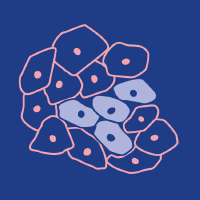Topic Editors

2. Department of Chemistry, University of Torino, Via Pietro Giuria 7, I-10125 Torino, Italy

Molecular Mechanisms of the Toxicity and Carcinogenicity of Particulates
Topic Information
Dear Colleagues,
We are pleased to inform you that we are planning a Topic on the molecular mechanisms of the toxicity and carcinogenicity of particulates. Particles and fibers affect human health as a function of their physicochemical properties, but both the mechanisms of action and link between physicochemical features and adverse responses are still often unclear. Knowledge of these mechanisms is fundamental for hazard identification and the development of new testing approaches as well as safe-by-design practices. This Topic aims to increase knowledge about the mechanisms of toxicity and role of physicochemical properties in the induction of adverse responses. Given your expertise in the field, we would like to invite you to send us a contribution. Original research articles (in vitro and in vivo studies) and reviews are welcome. Research areas may include (but are not limited to) particles and fibers of natural origin (asbestos and fibrous minerals, silica, volcanic ashes, and celestial dusts) and anthropic origin (artificial fibers, carbon nanotubes, titanium dioxide, particulate matter, metals, etc.), as well as the nanoparticles comprising them. We look forward to receiving your contributions.
Dr. Maura Tomatis
Dr. Elisabetta Aldieri
Topic Editors
Participating Journals
| Journal Name | Impact Factor | CiteScore | Launched Year | First Decision (median) | APC | |
|---|---|---|---|---|---|---|

Biology
|
4.2 | 4.0 | 2012 | 18.7 Days | CHF 2700 | Submit |

Cancers
|
5.2 | 7.4 | 2009 | 17.9 Days | CHF 2900 | Submit |

Healthcare
|
2.8 | 2.7 | 2013 | 19.5 Days | CHF 2700 | Submit |

Onco
|
- | - | 2021 | 18.3 Days | CHF 1000 | Submit |

Pathophysiology
|
- | 2.8 | 1994 | 22.6 Days | CHF 1400 | Submit |

Toxics
|
4.6 | 3.4 | 2013 | 14.7 Days | CHF 2600 | Submit |

Biomolecules
|
5.5 | 8.3 | 2011 | 16.9 Days | CHF 2700 | Submit |

International Journal of Molecular Sciences
|
5.6 | 7.8 | 2000 | 16.3 Days | CHF 2900 | Submit |

MDPI Topics is cooperating with Preprints.org and has built a direct connection between MDPI journals and Preprints.org. Authors are encouraged to enjoy the benefits by posting a preprint at Preprints.org prior to publication:
- Immediately share your ideas ahead of publication and establish your research priority;
- Protect your idea from being stolen with this time-stamped preprint article;
- Enhance the exposure and impact of your research;
- Receive feedback from your peers in advance;
- Have it indexed in Web of Science (Preprint Citation Index), Google Scholar, Crossref, SHARE, PrePubMed, Scilit and Europe PMC.

